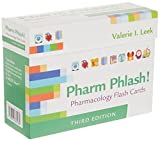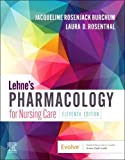Antidiabetic drugs are a group of drug structurally unrelated to sulfonylureas and are effective when used in combination with insulin or sulfonylureas. These drugs include alpha-glucosidase inhibitors, biguanides, dipeptidyl peptidase-4 (DPP-4) inhibitors, human amylin, incretin mimetics, meglitinides, and thiazolidinediones.
Table of Contents
- Antidiabetic Agents: Generic and Brand Names
- Therapeutic Action
- Indications
- Pharmacokinetics
- Contraindications and Cautions
- Adverse Effects
- Interactions
- Nursing Considerations
- Practice Quiz: Antidiabetic Agents
- Recommended Resources
- See Also
- References and Sources
Antidiabetic Agents: Generic and Brand Names
Here is a table of commonly encountered other antidiabetic agents, their generic names, and brand names:
- Alpha-glucosidase inhibitors
- acarbose miglitol (Precose, Glyset)
- Biguanides
- metformin (Glucophage)
- Dipeptidyl peptidase-4-inhibitors
- linagliptin (Tradjenta)
- saxagliptin (Onglyza)
- sitagliptin (Januvia)
- Human amilyn
- pramlintide acetate (Symlin)
- Incretin mimetics
- exanatide (Baraclude)
- liraglutide (Victoza)
- Meglitinides
- nateglinide (Starlix)
- repaglinide (Prandin)
- Thiozolidinediones
- pioglitazone (Actos)
- rosiglitazone (Avandia)
Therapeutic Action
The desired and beneficial action of other antidiabetic agents:
- Alpha-glucosidase inhibitors acarbose and miglitol inhibit alpha-glucosidase, an enzyme that breaks down glucose for absorption. Therefore, they delay the absorption of glucose. They have only a mild effect on glucose levels and do not enhance insulin secretion. They are associated with severe hepatic toxicity and GI distress.
- Biguanide metformin decrease the production and increases the uptake of glucose. It is effective in lowering blood glucose and does not cause hypoglycemia as the sulfonylureas do. It has been associated with development of lactic acidosis and GI distress.
- Meglitinides nateglinide and repaglinide are newer agents that act like sulfonylureas to increase insulin release.
- Synthetic human amylin pramlintide works to modulate gastric emptying after a meal to cause a feeling of fullness or satiety. It also prevents the postmeal rise in glucagon that usually elevates glucose levels. Human amylin is a hormone produced by beta cells in the pancreas that is important in regulating postmeal glucose levels. It should not be used when patient is unable to eat.
- Incretin mimetics exenatide and liraglutide mimic the effects of GLP-1: enhancement of glucose-dependent insulin secretion by the beta cells in the pancreas, depression of elevated glucagon secretion, and slowed gastric emptying to help moderate and lower blood glucose levels.
- DPP-4 inhibitors lina-, saxa-, and sitagliptin slow the breakdown of GLP-1 to prolong the effects of increased insulin secretion, decreased glucagon secretion, and slowed GI emptying.
- Thiazolidinediones pioglitazone and rosiglitazone decrease insulin resistance.
Indications
Other antidiabetic agents are indicated for the following medical conditions:
- Biguanide metformin is approved for use in children 10 years of age and older. It is also being used in the treatment of women with polycystic ovarian syndrome (PCOS).
- Meglitinides nateglinide and repaglinide are used to lower postprandial glucose levels because they are rapid-acting and with a very short half-life. They are taken just before meals.
- Thiazolidinediones pioglitazone and rosiglitazone are used in combination with insulin, metformin, and sulfonylureas in patients with insulin resistance.
- Bromocriptine, a dopamine agonist used to treat Parkinson’s disease was approved in 2009 as a CNS approach to treat type 2 diabetes.
Pharmacokinetics
Here are the characteristic interactions of other antidiabetic agents and the body in terms of absorption, distribution, metabolism, and excretion:
| Route | Onset | Peak | Duration |
| Oral | Slow | 2-2.5 h | 10-16 h |
| T1/2: 6.2 h and then 17 h Metabolism: liver Excretion: urine |
Contraindications and Cautions
The following are contraindications and cautions for the use of agents to control blood glucose level:
- Allergy to sulfonylureas and other antidiabetic agents. Avoid hypersensitivity reactions
- Type 1 diabetes. These patients do not have functioning beta cells and would have no benefit from the drug.
- Pregnancy and lactation. Potential adverse effect on the fetus or neonate.
Adverse Effects
Use of other antidiabetic agents may result to these adverse effects:
- Common adverse effects include hypoglycemia, lactic acidosis, GI upset, nausea, anorexia, diarrhea, heartburn, and allergic skin reaction.
- Pioglitazone is strongly linked with an increased risk of bladder cancer if it is used for over 1 year.
- Rosiglitazone is linked with increased risk of cardiovascular problems.
Interactions
The following are drug-drug interactions involved in the use of other antidiabetic agents:
- decreased excretion with drugs that acidify urine
Nursing Considerations
Nursing considerations are the same with sulfonylureas.
Practice Quiz: Antidiabetic Agents
Here are some practice questions for this study guide. Please visit our nursing test bank page for more NCLEX practice questions.
1. Which of the following exerts its effect by inhibiting the enzyme that breaks down glucose for absorption?
A. Miglitol
B. Metformin
C. Pramlintide
D. Linagliptin
1. Answer: A. Miglitol
The enzyme that breaks down glucose for absorption is called alpha glucosidase. Drugs under alpha glucosidase inhibitors include acarbose and miglitol.
2. This antidiabetic agent works best in patients with insulin resistance.
A. Biguanides
B. Dipeptidyl peptidase-4 inhibitors
C. Thiazolidinediones
D. Meglitinides
2. Answer: C. Thiazolidinediones
Thiazolidinediones pioglitazone and rosiglitazone work by decreasing insulin resistance.
3. This antidiabetic drug is also used in women with polycystic ovarian syndrome.
A. Acarbose
B. Metformin
C. Rosiglitazone
D. Nateglinide
3. Answer: B. Metformin
4. Which antidiabetic agent works by modulating gastric emptying after a meal to cause a feeling of fullness?
A. Incretin mimetics
B. Meglitinides
C. Human amylin
D. Biguanides
4. Answer: C. Human amylin
Synthetic human amylin pramlintide works to modulate gastric emptying after a meal to cause a feeling of fullness or satiety. It also prevents the postmeal rise in glucagon that usually elevates glucose levels. Human amylin is a hormone produced by beta cells in the pancreas that is important in regulating postmeal glucose levels. It should not be used when patient is unable to eat.
5. Use of pioglitazone for over a year is linked with which condition?
A. Loss of effectiveness of the drug
B. Bladder cancer
C. Esophageal cancer
D. Kidney failure
5. Answer: B. Bladder cancer
Pioglitazone is strongly linked with an increased risk of bladder cancer if it is used for over one year.
Recommended Resources
Our recommended nursing pharmacology resources and books:
Disclosure: Included below are affiliate links from Amazon at no additional cost from you. We may earn a small commission from your purchase which will help support us. Thank you! For more information, check out our privacy policy.
Pharm Phlash! Pharmacology Flash Cards #1 BEST SELLER!
Test-yourself review cards put critical clinical information for nearly 400 of the top generic medications at your fingertips. And, you can count on them for accuracy, because each card is based on content from Davis’s Drug Guide for Nurses. Increase your test scores in pharmacology class.

Focus on Pharmacology (8th Edition)
Focus on Nursing Pharmacology makes challenging concepts more approachable. Engaging learning features cultivate your clinical application, critical thinking and patient education capabilities. This updated 8th edition builds on your knowledge of physiology, chemistry and nursing fundamentals to help you conceptualize need-to-know information about each group of drugs.

Pharmacology Made Incredibly Easy (Incredibly Easy! Series®)
Nursing pharmacology guide offers step-by-step guidance so you can grasp the fundamentals in enjoyable Incredibly Easy style. This is the perfect supplement to class materials, offering solid preparation for NCLEX® as well as a handy refresher for experienced nurses. Colorfully illustrated chapters offer clear, concise descriptions of crucial nursing pharmacology concepts and procedures.

Lehne’s Pharmacology for Nursing Care (11th Edition)
The Eleventh Edition of Lehne’s Pharmacology for Nursing Care provides a thorough understanding of key drugs and their implications for nursing care. This text, written by renowned nursing educators, helps you comprehend and apply pharmacology principles. A clear and engaging writing style simplifies complex concepts, making even the most challenging pharmacology content enjoyable. We recommend this book if you want a comprehensive nursing pharmacology guide.

Nursing Drug Handbook
Nursing2023 Drug Handbook delivers evidence-based, nursing-focused drug monographs for nearly 3700 generic, brand-name, and combination drugs. With a tabbed, alphabetical organization and a “New Drugs” section, NDH2023 makes it easy to check drug facts on the spot.

Pharmacology and the Nursing Process
The 10th edition of Pharmacology and the Nursing Process offers practical, user-friendly pharmacology information. The photo atlas contains over 100 unique illustrations and photographs depicting drug administration techniques. Updated drug content reflects the most recent FDA drug approvals, withdrawals, and therapeutic uses.

Mosby’s Pharmacology Memory NoteCards: Visual, Mnemonic, and Memory Aids for Nurses
The 6th edition of Mosby’s Pharmacology Memory NoteCards: Visual, Mnemonic, & Memory Aids for Nurses incorporates illustrations and humor to make studying easier and more enjoyable. This unique pharmacology review can be utilized as a spiral-bound notebook or as individual flashcards, making it ideal for mobile study.

See Also
Here are other nursing pharmacology study guides:
- Nursing Pharmacology – Study Guide for Nurses
Our collection of topics related to nursing pharmacology - Pharmacology Nursing Mnemonics & Tips
These nursing mnemonics aim to simplify the concepts of pharmacology through the use of a simple, concise guide. - Generic Drug Name Stems Cheat Sheet
Learn about these generic drug name stems to help you make sense of drugs easier! - Common Drugs and Their Antidotes
A guide to drug antidotes that nurses should be familiar about. - IV Fluids and Solutions Guide & Cheat Sheet
Get to know the different types of intravenous solutions or IV fluids in this guide and cheat sheet. - Drug Dosage Calculations NCLEX Practice Questions (100+ Items)
Care to take the challenge? This quiz aims to help students and registered nurses alike grasp and master the concepts of medication calculation.
Drug Guides NEW!
Individual drug guides and nursing considerations for the most common medications used in nursing pharmacology:
- Acetaminophen (Tylenol)
- Aspirin
- Atorvastatin (Lipitor)
- Enoxaparin (Lovenox)
- Furosemide (Lasix)
- Gabapentin
- Hydromorphone (Dilaudid)
- Lisinopril
- Metoprolol
- Morphine
Gastrointestinal System Drugs
Respiratory System Drugs
- Antihistamines
- Bronchodilators and Antiasthmatics
- Decongestants
- Expectorants and Mucolytics
- Inhaled Steroids
- Lung Surfactants
Endocrine System Drugs
- Adrenocortical Agents
- Antidiabetic Agents
- Glucose-Elevating Agents
- Hypothalamic Agents
- Insulin
- Parathyroid Agents: Bisphosphonates, Calcitonins
- Pituitary Drugs
- Sulfonylureas
- Thyroid Agents
Autonomic Nervous System Drugs
- Adrenergic Agonists (Sympathomimetics)
- Adrenergic Antagonists (Sympatholytics)
- Anticholinergics (Parasympatholytics)
- Cholinergic Agonists (Parasympathomimetics)
Immune System Drugs
Chemotherapeutic Agents
- Anthelmintics
- Anti-Infective Drugs
- Antibiotics
- Antifungals
- Antineoplastic Agents
- Antiprotozoal Drugs
- Antiviral Drugs
Reproductive System Drugs
Nervous System Drugs
- Antidepressants
- Antiparkinsonism Drugs
- Antiseizure Drugs
- Anxiolytics and Hypnotic Drugs
- General and Local Anesthetics
- Muscle Relaxants
- Narcotics, Narcotic Agonists, and Antimigraine Agents
- Neuromuscular Junction Blocking Agents
- Psychotherapeutic Drugs
Cardiovascular System Drugs
References and Sources
References and sources for this pharmacology guide for Antidiabetic Agents:
- Karch, A. M., & Karch. (2011). Focus on nursing pharmacology. Wolters Kluwer Health/Lippincott Williams & Wilkins. [Link]
- Katzung, B. G. (2017). Basic and clinical pharmacology. McGraw-Hill Education.
- Lehne, R. A., Moore, L. A., Crosby, L. J., & Hamilton, D. B. (2004). Pharmacology for nursing care.
- Smeltzer, S. C., & Bare, B. G. (1992). Brunner & Suddarth’s textbook of medical-surgical nursing. Philadelphia: JB Lippincott.
